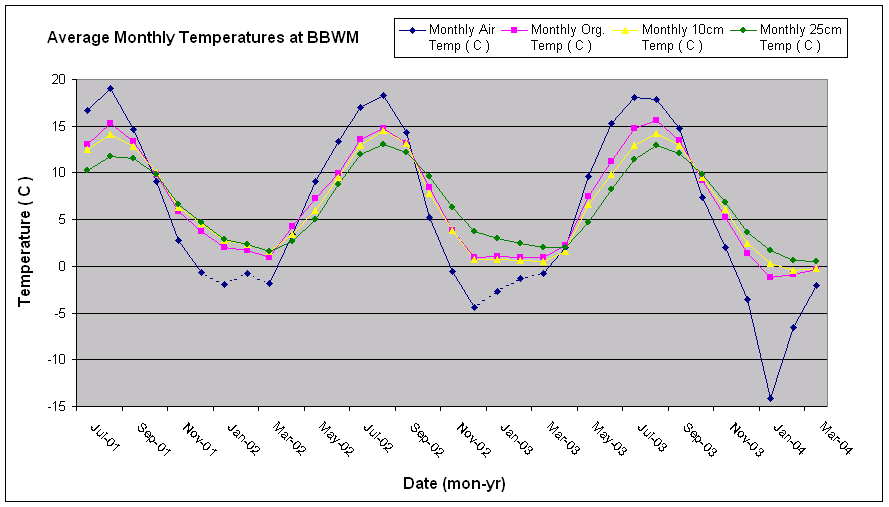Air and Soil Temperature
Description
A pilot air and soil temperature measurement program was initiated in July 2001 at the Bear Brook Watershed in Maine (BBWM). This pilot project provided the framework for a more comprehensive measurement and data analysis program of soil and air temperature at BBWM support by a National Science Foundation (NSF) Long-Term Research in Environmental Biology (LTREB) study known as LTREB: Forest Ecosystem Response to Changes in Atmospheric Chemistry and Climate at the Bear Brook Watershed in Maine (NSF award #0210257). The program was developed in an effort to determine what relationships may exist between climate, and the biogeochemical and hydrologic processes being studied at the East and West Bear Brook Watersheds. The immediate objective of this temperature study under NSF LTREB is primarily to develop the framework for the BBWM temperature data base that will be continuously updated into the future as a result of the air and soil temperature measurement program.

Instrumentation and Data Collection
Initially, through a cooperative agreement with the US Forest Service, eight HOBO H8 Outdoor/Industrial 4-channel data loggers (Onset Computer Corporation) were launched at the two watersheds in July 2001. Two data loggers were installed in the hardwood and softwood forest stands of each watershed. In June 2003 two additional data loggers were installed in the hardwood and softwood forest stands of each watershed (i.e. 4 instruments per stand). Temperature readings for each data logger are collected at 3 hour time intervals from 4 sources: air, O horizon, and at mineral soil depths of 10 and 25 cm.
Data Summary
Average monthly temperatures recorded at BBWM exhibit a sinusoidal annual pattern for all probes, with troughs occurring in the winter months and peaks in the summer months. Temperatures appear to reach a minima in January and maxima in August for each year. Minimum temperatures for mineral soils appear to linger from January until March before they start to increase, whereas maximum temperatures are reached in August and immediately decline in September for air and soil. Temperatures within the watershed exhibit expected seasonal inversion with deeper probes registering warmer temperatures in the winter compared to shallow probes or air, and cooler temperatures in the summer. The seasonal amplitude in temperature decreases from air to soil and with soil depth.
